You have the right idea, you just haven't completed the associations. First, note that User is connected twice to Follow - once in each direction.
rails g model User email:string name:string
rails g model Follow user:references follow_user:references
Then:
class User < ActiveRecord::Base
has_many :follows, inverse_of: :user
has_many :followers, through: :follows
has_many :followings, class_name: 'Follow', foreign_key: :follow_user_id, inverse_of: :follower
has_many :users_i_follow, through: :followings, source: :user
end
class Follow < ActiveRecord::Base
belongs_to :user, inverse_of: :follows
belongs_to :follower, inverse_of: :followers, class_name: 'User', foreign_key: :follow_user_id
end
Now, for a user you have two associations that you'll probably mostly use: "followers" and "users_i_follow".
mdchaney$ bundle exec rails c
Loading development environment (Rails 4.1.5)
2.1.1 :001 > u = User.create(:email => 'test@comor.net', :name => 'Leader Guy')
=> #<User id: 1, email: "test@comor.net", name: "Leader Guy", created_at: "2014-09-26 18:48:52", updated_at: "2014-09-26 18:48:52">
2.1.1 :002 > u2 = User.create(:email => 'follower@comor.net', :name => 'Follower Guy')
=> #<User id: 2, email: "follower@comor.net", name: "Follower Guy", created_at: "2014-09-26 18:49:13", updated_at: "2014-09-26 18:49:13">
2.1.1 :003 > u3 = User.create(:email => 'follower3@comor.net', :name => 'Follower Guy, III')
=> #<User id: 3, email: "follower3@comor.net", name: "Follower Guy, III", created_at: "2014-09-26 18:49:25", updated_at: "2014-09-26 18:49:25">
2.1.1 :004 > u.followers
=> #<ActiveRecord::Associations::CollectionProxy []>
2.1.1 :005 > Follow.create(:user => u, :follower => u2)
=> #<Follow id: 1, user_id: 1, follow_user_id: 2, created_at: "2014-09-26 18:50:12", updated_at: "2014-09-26 18:50:12">
2.1.1 :006 > Follow.create(:user => u, :follower => u3)
=> #<Follow id: 2, user_id: 1, follow_user_id: 3, created_at: "2014-09-26 18:50:14", updated_at: "2014-09-26 18:50:14">
2.1.1 :007 > u = User.find(1)
=> #<User id: 1, email: "test@comor.net", name: "Leader Guy", created_at: "2014-09-26 18:48:52", updated_at: "2014-09-26 18:48:52">
2.1.1 :008 > u.followers
=> #<ActiveRecord::Associations::CollectionProxy [#<User id: 2, email: "follower@comor.net", name: "Follower Guy", created_at: "2014-09-26 18:49:13", updated_at: "2014-09-26 18:49:13">, #<User id: 3, email: "follower3@comor.net", name: "Follower Guy, III", created_at: "2014-09-26 18:49:25", updated_at: "2014-09-26 18:49:25">]>
2.1.1 :009 > u.follows
=> #<ActiveRecord::Associations::CollectionProxy [#<Follow id: 1, user_id: 1, follow_user_id: 2, created_at: "2014-09-26 18:50:12", updated_at: "2014-09-26 18:50:12">, #<Follow id: 2, user_id: 1, follow_user_id: 3, created_at: "2014-09-26 18:50:14", updated_at: "2014-09-26 18:50:14">]>
2.1.1 :010 > u2 = User.find(2)
=> #<User id: 2, email: "follower@comor.net", name: "Follower Guy", created_at: "2014-09-26 18:49:13", updated_at: "2014-09-26 18:49:13">
2.1.1 :011 > u2.followers
=> #<ActiveRecord::Associations::CollectionProxy []>
2.1.1 :012 > u2.follows
=> #<ActiveRecord::Associations::CollectionProxy []>
2.1.1 :013 > u2.followings
=> #<ActiveRecord::Associations::CollectionProxy [#<Follow id: 1, user_id: 1, follow_user_id: 2, created_at: "2014-09-26 18:50:12", updated_at: "2014-09-26 18:50:12">]>
2.1.1 :014 > u2.users_i_follow
=> #<ActiveRecord::Associations::CollectionProxy [#<User id: 1, email: "test@comor.net", name: "Leader Guy", created_at: "2014-09-26 18:48:52", updated_at: "2014-09-26 18:48:52">]>

